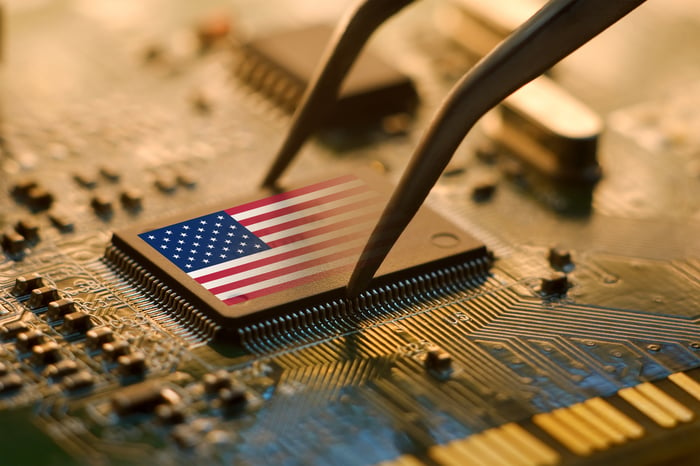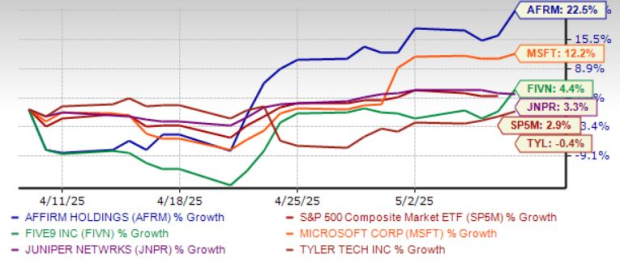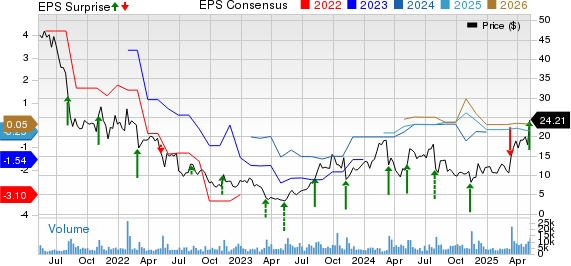Nvidia Faces New Challenges Amid Market Turmoil
Nvidia (NASDAQ: NVDA) was once riding high, but in recent months, the stock has struggled.
The leading artificial intelligence (AI) chip manufacturer has experienced a downturn, similar to many technology and growth stocks. Investors are worried about President Trump’s tariffs on imports. These taxes could raise costs for companies like Nvidia that rely on overseas production, potentially driving up prices throughout the economy.
Considering an investment of $1,000? Our analysts have identified the 10 best stocks to invest in today. Learn More »
Market Pressures on the Technology Sector
The increasing tension around tariffs has added pressure on tech firms and even pushed the Nasdaq Composite (NASDAQINDEX: ^IXIC) into a bear market earlier this month. President Trump’s temporary exemption for electronics from tariffs offers some relief; however, he hinted that these exemptions may not last.
Nvidia is dealing with another significant obstacle—the U.S. government’s restrictions on chip exports to China. Recently, this issue intensified. The key question is whether Nvidia’s CEO Jensen Huang can navigate through this latest challenge. Historical context may provide insight.

Image source: Getty Images.
Nvidia’s Dominance in AI Technology
Nvidia has established itself as a leader in artificial intelligence, offering an array of solutions for businesses developing AI platforms. The company’s most valuable assets are its AI chips, known as graphics processing units (GPUs). These GPUs are crucial for AI tasks such as training models and processing data, making them highly desired in the tech sector.
This strong demand has led Nvidia to achieve remarkable revenue growth, posting double- and triple-digit increases in recent years, reaching unprecedented revenue levels in the billions. Staying at the forefront of innovation has been vital for Nvidia’s continued leadership in the market.
However, recent developments have cast a shadow over this success. As previously mentioned, Nvidia faces uncertainty due to potential new tariffs from the Trump administration. Even with a current exemption, the threat of increased tariffs looms large, keeping investors on edge about potential impacts on the company’s bottom line.
Furthermore, Nvidia is now required to secure a license to export its H20 chips to China, which has been both unexpected and concerning. This regulatory hurdle has prompted Nvidia to announce a $5.5 billion charge related to H20 inventory and purchase commitments, which will affect its fiscal first quarter ending April 27.
Export Restrictions Impacting Revenue
Currently, the government has not issued export licenses to Nvidia or other chip manufacturers, preventing sales to China. Without these licenses, the earnings impact is anticipated to be significant, likely resulting in lower revenue for Nvidia and its peers in upcoming quarters.
Now, the question remains: Can Jensen Huang overcome these challenges? His previous actions suggest he is capable of turning obstacles into opportunities. During the pandemic-related disruptions, Huang invested over $1 billion to ensure a steady chip supply, as Nvidia does not manufacture chips internally and relies on Taiwan Semiconductor Manufacturing.
In response to the Biden administration’s previous chip export restrictions, Huang acted quickly to design a new chip, which became the H20. These responses during 2021 and 2022 had a positive effect on Nvidia’s earnings and stock performance.

NVDA data by YCharts
Huang has consistently sought opportunities, such as transforming the GPU’s role from primarily serving gaming to being integral in general-purpose computing. The launch of the CUDA parallel computing platform in 2006 marked a significant expansion of Nvidia’s applications, contributing to stock price increases.

NVDA data by YCharts
Can Huang and Nvidia Navigate Current Challenges?
Returning to our central question: Can Huang tackle this latest hurdle? His track record reflects strategic decision-making in times of difficulty. He is demonstrating this capability as he recently traveled to Beijing for discussions with the China Council for the Promotion of International Trade, as reported by Reuters.
Despite Huang’s proactive approach, the final decisions lie with the U.S. government. An end to sales to China would significantly impact Nvidia’s earnings, as these sales accounted for 14% of the company’s data center revenue in fiscal year 2024.
Nonetheless, Nvidia has shown resilience in the face of past challenges and continues to dominate the fast-growing AI market. Even if the worst-case scenario unfolds, Huang’s resourcefulness suggests he might mitigate the impact. This underlying strength makes Nvidia an attractive long-term investment for tech-oriented investors, despite current market volatility.
Is Now the Right Time to Invest $1,000 in Nvidia?
Before deciding to invest in Nvidia’s stock, keep this in mind:
The Motley Fool Stock Advisor analyst team has recently identified the 10 best stocks for potential investment—and Nvidia was not among them. The stocks that made the list are expected to yield substantial returns in the forthcoming years.
For instance, if you had invested $1,000 in Netflix when it was first recommended on December 17, 2004, it would now be worth $524,747! Likewise, an investment of $1,000 in Nvidia from April 15, 2005, would have grown to $622,041!*
It’s also notable that the average total return for Stock Advisor stands at 792%, which surpasses the 153% return of the S&P 500—making it a potential opportunity not to be ignored.
*Stock Advisor returns as of April 14, 2025
Adria Cimino does not hold shares in any of the stocks mentioned. The Motley Fool has positions in and recommends Nvidia and Taiwan Semiconductor Manufacturing, holding a disclosure policy.
The views and opinions expressed herein are the views and opinions of the author and do not necessarily reflect those of Nasdaq, Inc.




